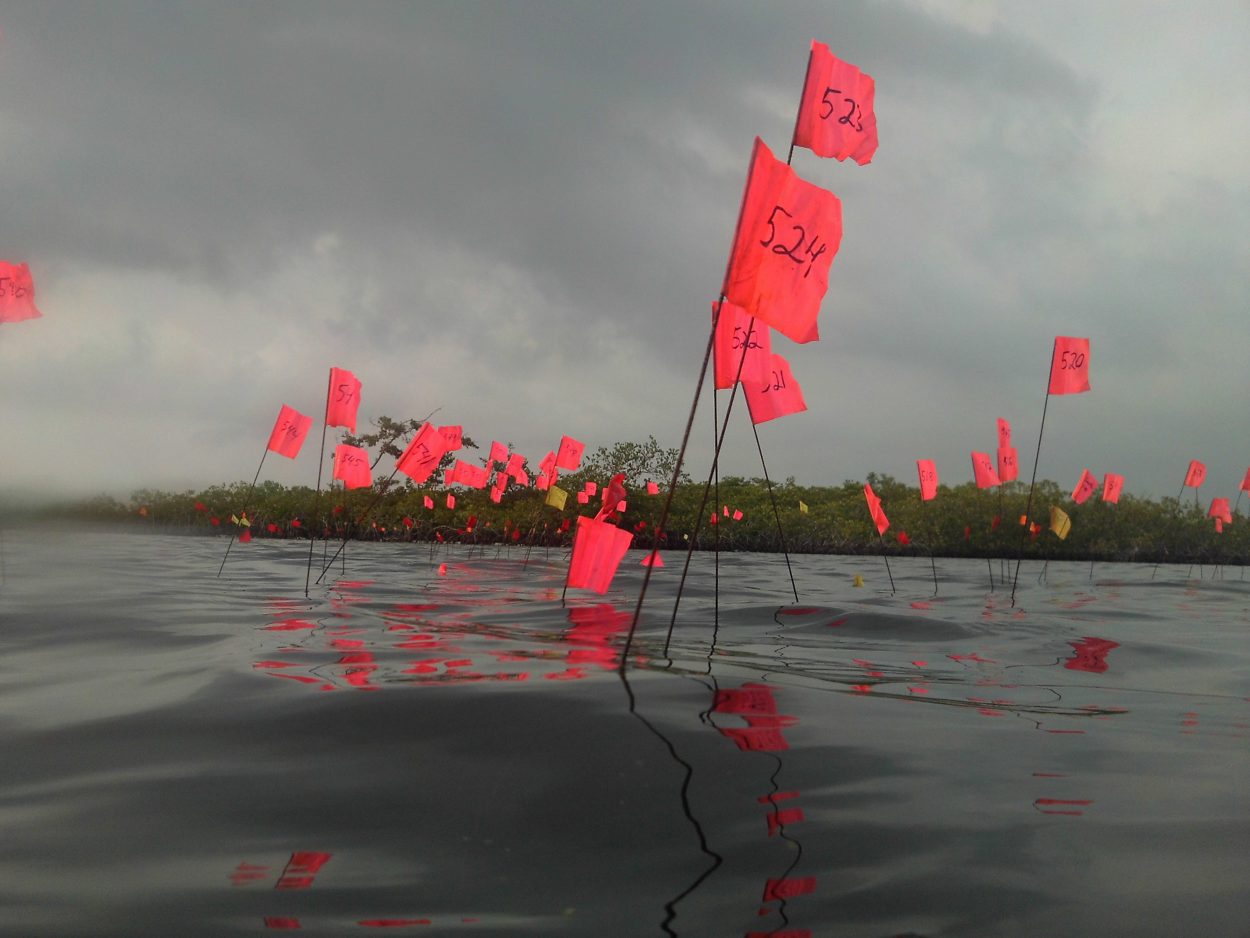Archaeologists conducting underwater excavations of Ta’ab Nuk Na (600-800 AD), the largest of 110 submerged Maya sites in Paynes Creek, Belize, have revealed that the salt workers worked from home.
Ta’ab Nuk Na is located in a coastal lagoon, where researchers have identified over 100 other submerged Maya sites from between 600-1000 AD, including several other salt works spread along the shore.
By conducting a systematic survey of Ta’ab Nuk Na, the team found a submerged residential structure where the workers lived, providing new insights into how this important industry was organised for the production of salt at the height of the Classic Maya Period.
Underwater archaeologists marked the location of key finds on the lagoon floor, leaving the water bristled with a forest of over 600 flags marking their location. This included many features that are rarely preserved outside of a submerged setting.

The survey identified hundreds of wooden posts that defines the walls of Classic Maya “pole and thatch” wooden buildings, giving the researchers a rare view of the architecture that once dominated most ancient Maya communities.
The locations of these were digitally plotted and key elements excavated, revealing the footprint of several buildings which Radiocarbon dating suggests were the result of several phases of construction.
The data indicates that during the 6th century AD, only a handful of residential buildings existed onsite. However, by around AD 650 the special pattern of buildings increased as a result of three salt kitchens being constructed at Ta’ab Nuk Na.
Excavations of the residential structure shows that the household activities included fishing, preparing food and cooking, woodworking, and spinning cotton. This suggests that the people working at the salt mines also lived onsite, with the community first producing salt for themselves before trading the surplus with other settlements.
“The surplus was transported inland to marketplaces where it was exchanged for other commodities, including pottery and stone tools found at the salt worker’s residence,” said Professor Sills.
This would have been a large surplus, with estimates indicating that Ta’ab Nuk Na may have produced over a tonne of salt a week. Together, Ta’ab Nuk Na and the other contemporary salt works at Paynes Creek could have provided enough salt for 24,000 people.
Crucially, the fact that the workers lived at the site and worked in indoor kitchens meant that salt could be produced year-round. This arrangement would have helped meet the demand of inland Maya cities, which were growing to their biggest extent during this period.
Production at Ta’ab Nuk Na stopped after 800 AD and the large site of Ek Way Nal, in another part of the lagoon, became the biggest salt kitchen in Paynes Creek.
https://doi.org/10.15184/aqy.2022.106
Header Image Credit : Antiquity





